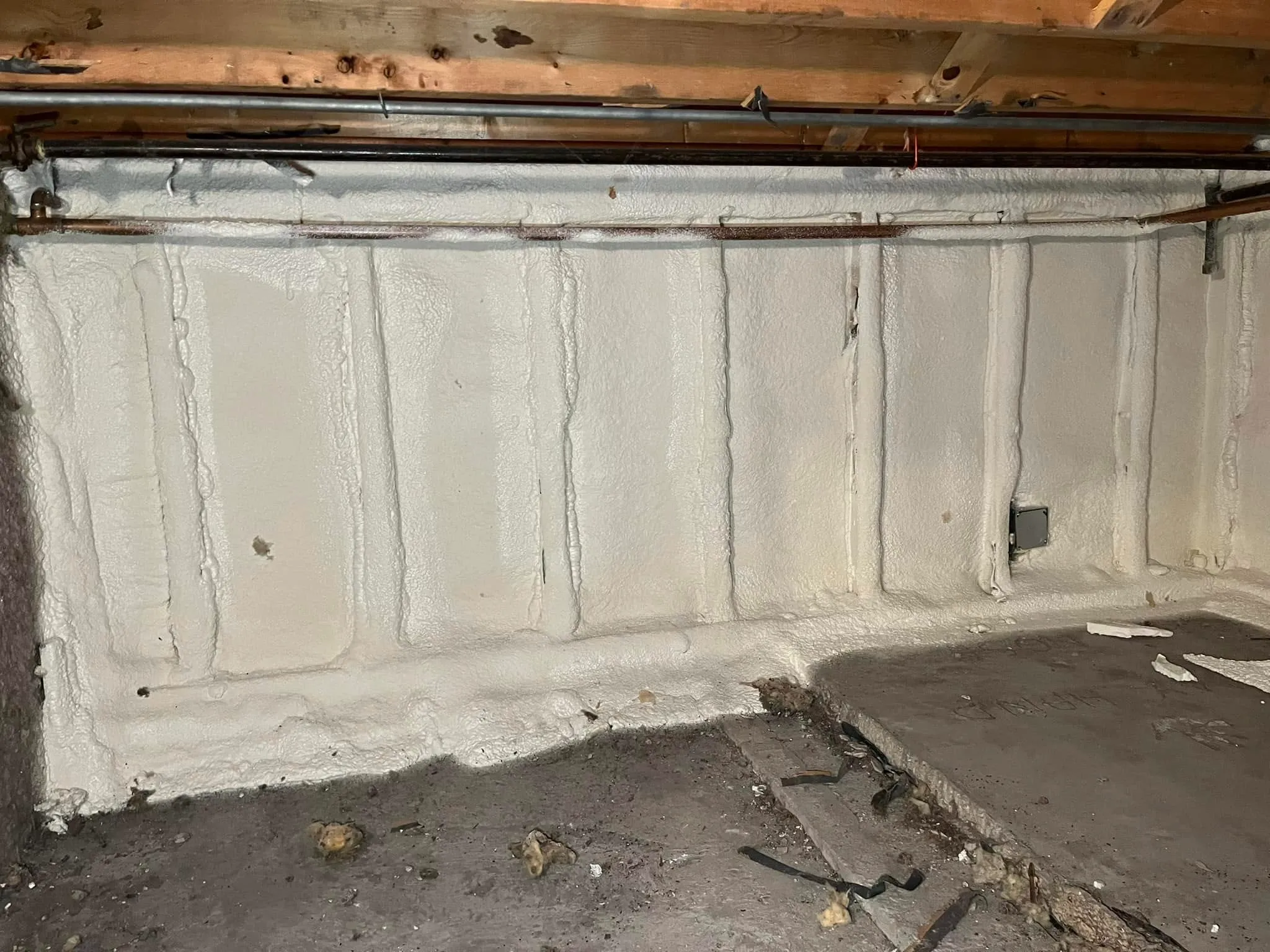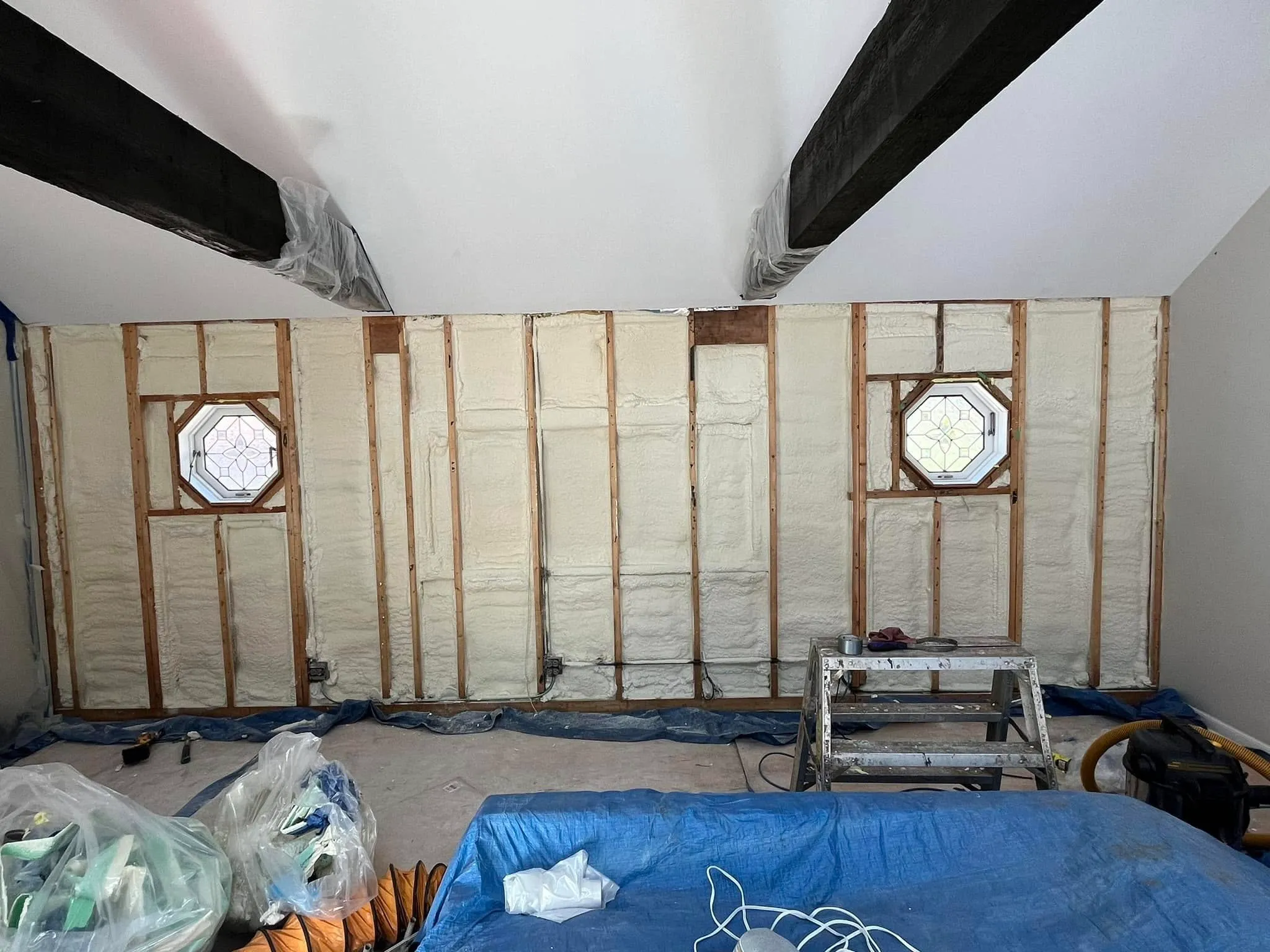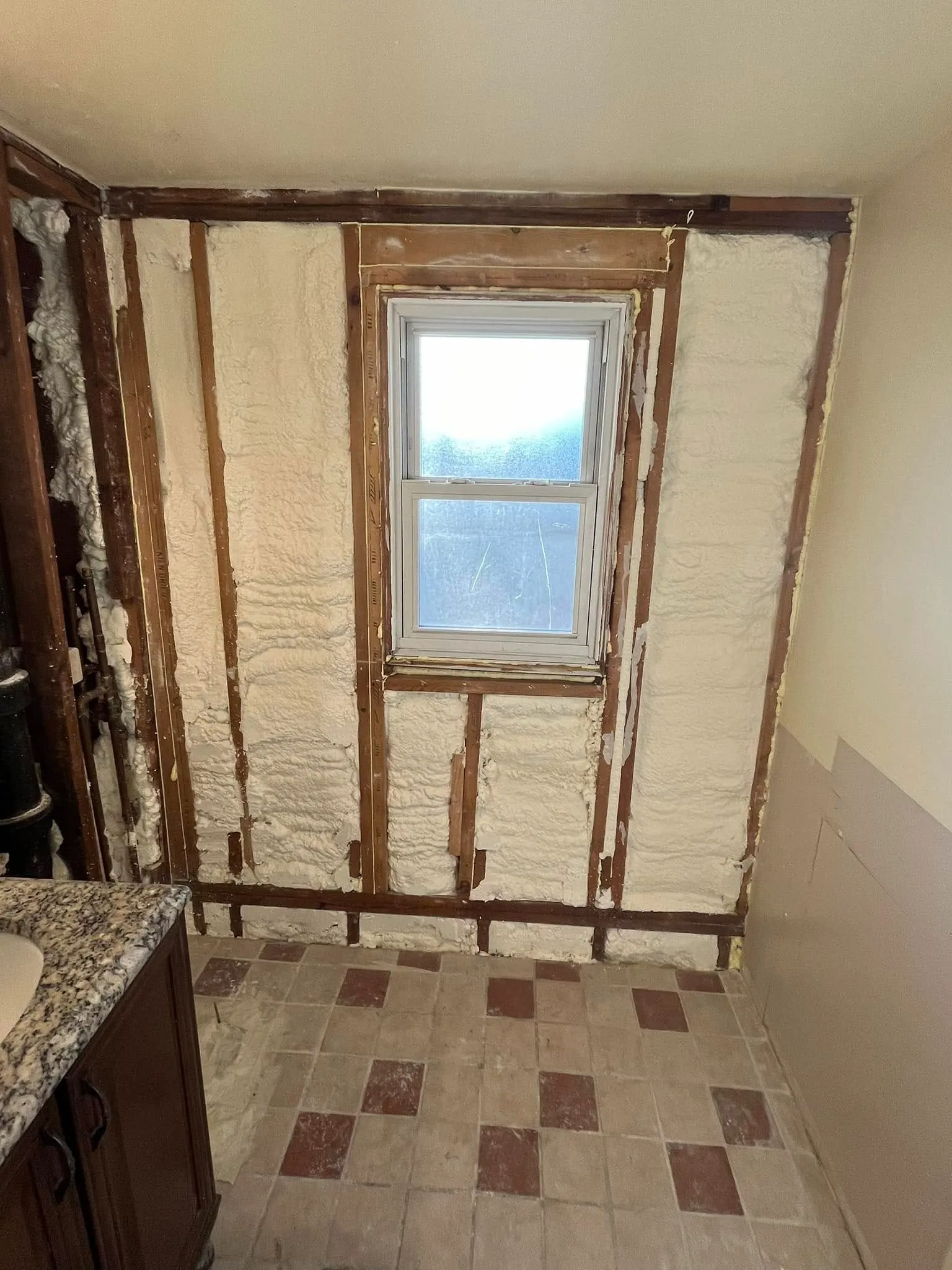
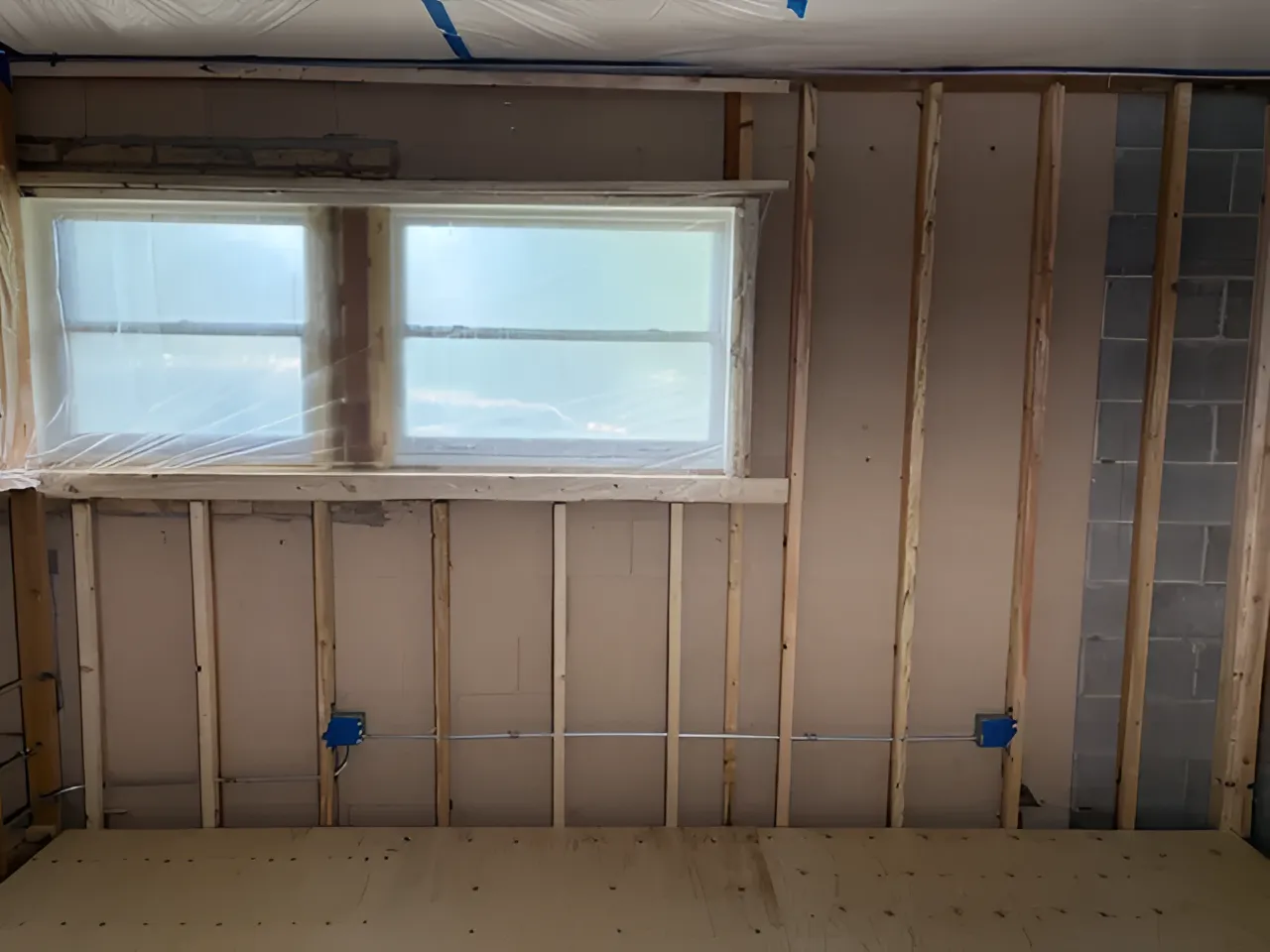
Properly installed spray foam insulation is a highly effective tool for reducing indoor allergens because it creates a near-impermeable air barrier. This seal stops airborne particles like pollen, dust, and pollutants from entering the home through the countless small cracks and gaps found in a typical building’s structure. By controlling air leakage, spray foam directly limits the introduction of outdoor allergens. It also plays a significant part in moisture management, which helps prevent the growth of mold, mildew, and dust mites—all common triggers for allergy and asthma symptoms.
This article explains how spray foam insulation works to create a healthier indoor environment. The information is based on extensive field experience in building science and insulation application, providing a practical look at how this material improves indoor air quality. Understanding the connection between your home’s building envelope and the air you breathe is the first step toward a more comfortable living space.
Spray polyurethane foam (SPF) is applied as a liquid that expands to fill every crack, gap, and cavity, creating a solid, continuous barrier. Unlike traditional insulation like fiberglass batts, which are cut to fit and can leave gaps, spray foam custom-fits the space it occupies. This comprehensive seal is what makes it so effective at air sealing.
A report from the U.S. Environmental Protection Agency highlights that controlling the sources of indoor air pollution is a key strategy for maintaining healthy air. Spray foam addresses this directly by blocking the pathways through which outdoor pollutants enter. This includes tiny openings around plumbing, electrical wiring, window frames, and foundation joints. By sealing these points of entry, the insulation effectively filters the air that gets into your home.
Many common indoor allergens thrive in damp environments. Mold, mildew, and dust mites all require moisture to grow and reproduce. Closed-cell spray foam acts as a vapor barrier, resisting the passage of moisture through the building structure. This is particularly important in walls, crawl spaces, and attics, where temperature differences can cause condensation.
According to the Asthma and Allergy Foundation of America, maintaining indoor humidity below 50% can help control dust mites and inhibit mold growth. By preventing moisture from seeping into wall cavities and accumulating on surfaces, spray foam helps keep indoor humidity levels low and stable. This deprives allergens of the water they need to survive, making the home a less hospitable environment for them.
Bonus Tip: In a tightly sealed home, it’s a good idea to ensure adequate mechanical ventilation, such as an Energy Recovery Ventilator (ERV). This system exchanges stale indoor air with fresh outdoor air while managing humidity levels, preventing the buildup of indoor pollutants without compromising the air seal.
Not all insulation materials offer the same level of protection against allergens. Their effectiveness is largely determined by their ability to seal air leaks and resist moisture.
| Feature | Spray Foam Insulation | Fiberglass Batts | Blown-In Cellulose |
|---|---|---|---|
| Air Sealing Ability | Excellent; expands to fill all gaps and cracks. | Poor; gaps often remain around edges and obstructions. | Moderate; settles over time, potentially creating gaps. |
| Moisture Resistance | Excellent (especially closed-cell); acts as a vapor barrier. | Poor; can absorb moisture, promoting mold growth. | Poor; treated with chemicals but can still absorb moisture. |
| Allergen Resistance | Excellent; inert material that does not support mold growth. | Fair; mold can grow on the paper facing and trapped dust. | Fair; treated with borates to resist mold, but moisture is still a risk. |
| Structural Integrity | Adds rigidity and strength to the structure. | Provides no structural support. | Provides no structural support. |
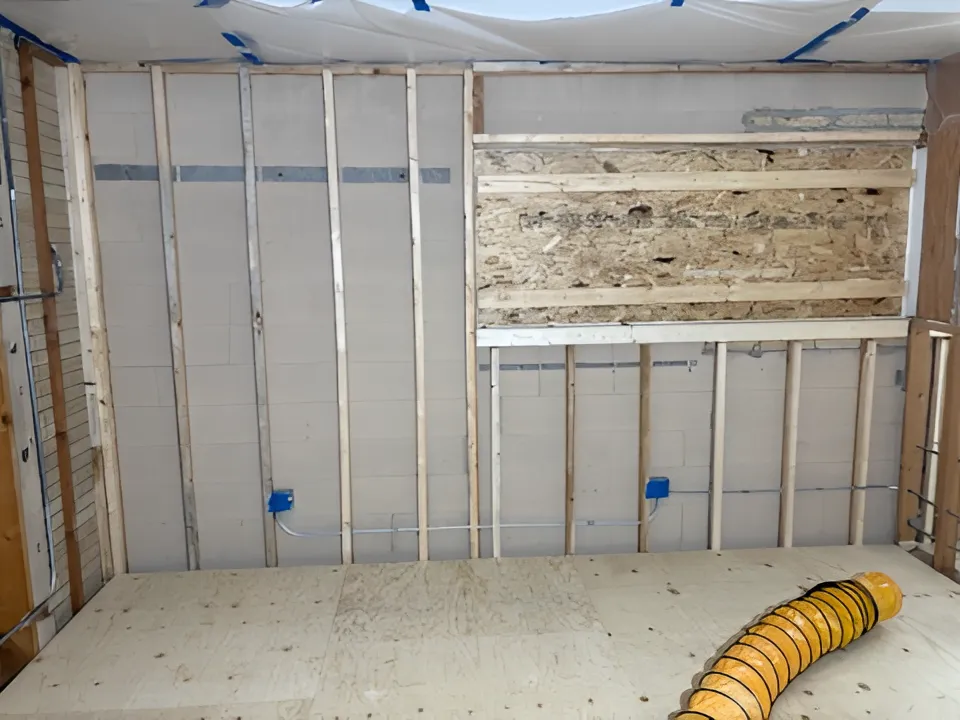
Choosing the right insulation involves more than just picking a material. Several factors must be evaluated to ensure the best performance for allergen reduction and overall home health.
There are two primary types of spray foam. Open-cell foam is less dense, provides an excellent air seal, and has sound-dampening qualities. Information from the U.S. Department of Energy explains that closed-cell foam is denser, offers a higher R-value per inch, and acts as a vapor barrier, making it superior for moisture control. For basements, crawl spaces, and areas prone to humidity, closed-cell is often the better choice for preventing allergen-friendly conditions.
The benefits of spray foam are entirely dependent on the quality of the installation. The foam must be mixed at the correct temperature and ratio and applied at the proper thickness. Incorrect application can result in gaps, poor adhesion, or chemical off-gassing, which could introduce new irritants into the air. Always work with certified and experienced installers who understand the chemistry and building science behind the product.
In a climate like the Chicago area, with its cold winters and humid summers, moisture management is a top priority. For below-grade applications like basements, closed-cell spray foam is highly recommended. It prevents moisture from the soil from wicking through the foundation walls, a common source of dampness and mold growth that can affect the entire house.
Bonus Tip: To maximize allergen reduction, pair spray foam insulation with flooring options like hardwood or laminate instead of wall-to-wall carpeting, which can trap dust, dander, and other allergens.
Ultimately, proper spray foam insulation provides a powerful defense against indoor allergens by creating a thorough air and moisture barrier. By stopping pollen, dust, and mold spores at the source, it helps create a cleaner, healthier, and more comfortable indoor environment. This approach goes beyond simple filtration by addressing the structural weaknesses that allow allergens into a home in the first place.
To achieve the best results, it is essential to evaluate your home’s specific conditions, ventilation needs, and long-term air quality goals. A professional assessment can identify the key areas for improvement and ensure the solution is tailored to your home’s unique structure and your family’s health needs.
Understanding your home’s unique air leakage points and moisture challenges is the first step toward a healthier indoor environment. A professional evaluation can pinpoint problem areas and determine the most effective insulation strategy. The team at South Chicago Insulation offers detailed assessments to help homeowners improve their indoor air quality. For a consultation or to discuss your project, you can call (779) 803-8025 or send an email to [email protected].
Once fully cured, spray foam is an inert plastic and is not considered an allergen. During the application and curing process, which typically takes 24 to 48 hours, occupants should vacate the premises as volatile organic compounds (VOCs) are released. Professional installers use proper ventilation and safety equipment to manage this process safely.
Most manufacturers recommend staying out of the home for 24 to 48 hours after installation. This allows the foam to cure fully and for any VOCs to dissipate. After this period, the material is stable and poses no respiratory risk.
Yes. Because spray foam creates such a tight air seal, it significantly reduces the infiltration of fine particulate matter from sources like wildfire smoke, industrial pollution, and vehicle exhaust.
An air purifier can still be beneficial. While spray foam stops allergens from entering from the outside, it doesn’t address pollutants generated indoors, such as pet dander, cooking fumes, or VOCs from new furniture. The two systems work well together for comprehensive air quality control.
Absolutely. Spray foam is often used in existing homes to upgrade insulation in attics, crawl spaces, and wall cavities. For walls, installers can often inject the foam through small holes, which are then patched and painted, causing minimal disruption.

